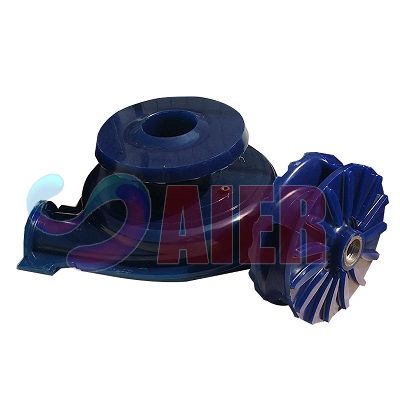Oct . 03, 2025 11:55 Back to list
Wholesale Slurry Pump Parts Impeller: Need OEM & Durable?
If you’re sourcing a wholesale slurry pump parts impeller or liner set right now, you’re probably juggling price, wear life, and delivery windows. I’ve been in and around slurry circuits for a decade—quarries, tailings, frac sand—and one thing keeps coming up: polyurethane has quietly taken a big bite out of maintenance hours in fine to medium abrasives. The U01 and U38 wear-resistant polyurethane elastomer parts from China (Warman-compatible liners, and in some builds, molded impeller vanes/covers) are a case in point.
Quick trend note: demand for lighter, tougher elastomers is rising as operators push higher solids and longer runs. Many customers say they see fewer “mystery stops” after switching from generic rubber to engineered PU. To be honest, it’s not magic—just better abrasion behavior and tighter molding tolerances.

Product snapshot: U01, U38 polyurethane elastomer parts
Origin: China | Application: Warman pump liners (and certain molded impeller components). Best for fine silica, tailings, cyclone feed, dredge booster stages at moderate temperatures. Many plants pair U38 in the high-wear throatbush with U01 in the casing liner—nice balance.
Specifications (typical lab values)
| Parameter | U01 | U38 |
|---|---|---|
| Hardness (ASTM D2240, Shore A) | 88 ±2 | 92 ±2 |
| Tensile Strength (MPa) | ≈35 | ≈38 |
| Elongation at Break (%) | ≈450 | ≈420 |
| Abrasion Loss (ISO 4649, mm³) | ≤80 | ≤55 |
| Specific Gravity | 1.12–1.15 | 1.14–1.18 |
| Recommended Temp. (°C) | 5–70 (real-world may vary) | 5–70 (real-world may vary) |
| Typical Slurry pH | ≈4–10 | ≈4–10 |
Process flow and QA
- Materials: prepolymer + curatives tuned for abrasion/tear; steel inserts grit-blasted (Sa 2.5) and primed.
- Molding: hot-cast PU, controlled degassing, precision molds; critical surfaces post-machined to ±0.8 mm.
- Testing: hardness (ASTM D2240), abrasion (ISO 4649), tensile/elongation (ISO 37), dimensional checks, dynamic balance for impeller builds (ISO 1940-1, G6.3 target).
- Service life: in fine-sand cyclone feed, users report ≈1.8–2.5× vs. generic rubber, and up to ≈1.5× vs. high-chrome in sub-300 µm slurries; your mileage will vary with PSD and duty.
- Industries: aggregates, tailings, potash, dredging booster pumps, battery minerals (graphite, lithium fines).
Where it fits
Use wholesale slurry pump parts impeller and liner kits in long, steady-state runs with fine to medium abrasives, moderate temperature, and moderate pH. If you’re running coarse, sharp basalt at high tip speeds, you may still prefer high-chrome metal. Actually, some clients split duty—PU liners with a metal impeller—to hedge risk.
Vendor comparison (indicative)
| Vendor | Fit/Compatibility | Lead Time | QC/Standards | Price Index |
|---|---|---|---|---|
| Aierpumps (U01/U38) | Warman-compatible sizes (2/3 up to 10/8) | ≈10–20 days | ISO 9001 systems; ASTM/ISO test reports | $$ |
| Regional Vendor B | Mixed; some rebranded imports | Stock-dependent | Basic COA; limited abrasion data | $$$ |
| Trading House C | Generic fit; variable molds | ≈25–35 days | Minimal documentation | $ |
Customization and practical notes
- Compound tweaks: softer U01 face on suction side, harder U38 at throat—common request.
- Balance and weight: for wholesale slurry pump parts impeller builds, insist on ISO 1940-1 balance report.
- Certifications: suppliers typically provide ISO 9001 QMS certificate, RoHS/REACH declarations, and test data pack.
- Feedback: one sand producer told me, “we stretched liner changeouts from 8 to nearly 14 weeks.” Not every site gets that, but it’s telling.
Mini case study
South China aggregate plant, 6/4 pump on cyclone feed (38–42% solids, D50 ≈180 µm). Swapped to U38 throatbush + U01 liners; retained existing metal impeller. Result: measured wear rate dropped ≈37% over 1,200 hours, with no cavitation flags. Next phase: trialing a PU-coated wholesale slurry pump parts impeller for further gains.
Final thought
If your slurry is fine, not too hot, and not overly caustic, U01/U38 polyurethane is a very sensible path—cost-effective and, surprisingly, quite forgiving on start-stop duty. I guess the boring truth is that good molding and real test data still win.
- ASTM D2240 – Standard Test Method for Rubber Property—Durometer Hardness.
- ISO 4649 – Rubber, vulcanized or thermoplastic — Determination of abrasion resistance.
- ISO 37 – Rubber, vulcanized or thermoplastic — Determination of tensile stress-strain properties.
- ISO 1940-1 – Mechanical vibration — Balance quality requirements for rotors.
- ISO 9001:2015 – Quality management systems — Requirements.
- ISO 23936-2 – Petroleum and natural gas industries — Non-metallic materials in contact with media related to oil and gas production — Elastomers.
-
Leading FGD Pump Manufacturers for Reliable Flue Gas Desulfurization Solutions
NewsNov.24,2025
-
Reliable FGD Pump Manufacturer China | Durable & Cost-effective Solutions
NewsNov.23,2025
-
Reliable fgd Pump Manufacturer Solutions for Emission Control | Aier Pumps
NewsNov.23,2025
-
Explore Advanced FGD Pump Factory Solutions for Cleaner Power Plants
NewsNov.22,2025
-
Reliable & Efficient FGD Pump Chinese Supplier for Cleaner Energy Solutions
NewsNov.22,2025
-
Reliable China FGD Pump Suppliers for Effective Flue Gas Desulfurization | AiEr Pumps
NewsNov.22,2025
